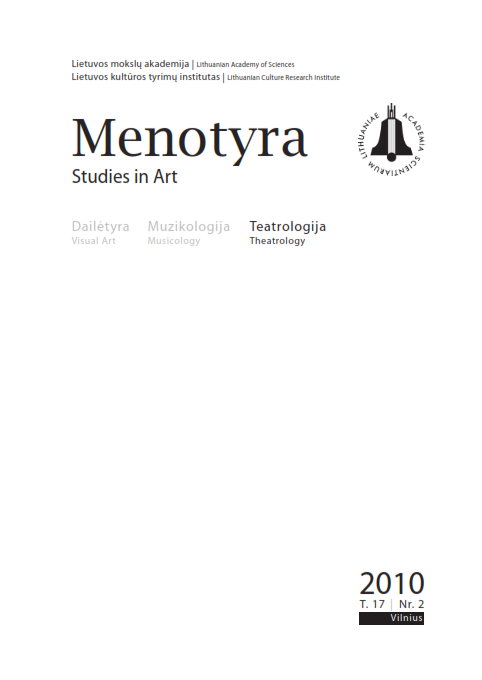Apie naratyvumą šiuolaikiniame teatre: spektaklio „Tolima šalis“ atvejis
On narrativity in contemporary theatre: a case study of the performance “The Distant Land”
Author(s): Rūta MažeikienėSubject(s): Theatre, Dance, Performing Arts, Transformation Period (1990 - 2010), Present Times (2010 - today), Sociology of Art
Published by: Lietuvos mokslų akademijos leidykla
Keywords: narrativity;narratology;narrator;contemporary theatre;
Summary/Abstract: The article addresses one of the notable characteristics of contemporary theatre: instead of being a place for showing and seeing, theatre more and more often becomes a place for narrating and listening. As contemporary theatre theorists note, the narrative manner of artistic expression is one of the distinctive features of contemporary theatre, as there are numerous performances in which narrative monologues and dialogues dominate the dramatic action. That is why the spectator very often has the impression that he / she is not seeing a play but rather listening to a story. Moreover, the narrative mode of representation encourages blurring the clear-cut distinction between fiction and reality, and allows the actors to tell / present the story freely balancing between the fictional status of the narrative story (histoire) and the actual situation of narration (narration). Referring to Gérard Genette’s narratology, the play “Le pays lointain” (“The distant land”) written by the French author Jean-Luc Lagarce (1994) and its theatrical production staged by the Lithuanian director Gintaras Varnas for the Kaunas State Drama Theatre (2001), the article discusses how the process of narration is shaped in a dramatic text, how it is developed in a theatrical performance, and how this kind of narration blurs the division between fiction and reality.
Journal: Menotyra
- Issue Year: 17/2010
- Issue No: 2
- Page Range: 160-168
- Page Count: 9
- Language: Lithuanian

